Early Literacy Aside--Explain: Our early literacy tip of the day today is on print awareness. There are many ways we can help children understand that print has meaning. Research studies point out that about 95% of a child's attention goes to the pictures. Today in storytime I'll be pointing out some ways we can help them focus on the print as well.
Reading--Language of Books
Early Literacy Aside--Explain: Reading is one of the best ways to introduce new words to your children. Many books have unfamiliar words. ones we would not use in regular conversations with our children. Talking about even one or two of the words before, during or after reading the book is one way to build your children's vocabulary. Knowing lots of words, having a large vocabulary, helps children not only understand what they later learn to read, it also helps them recognize words when they later try to sound them out. Today we'll see how the language of books expands your child's vocabulary.
My Bonnie Lies Over the Ocean (or other song with repeated sounds)
For any song with repeated sounds. Example: My Bonnie Lies Over the OceanStart out with one sound, say /b/ (buh). Each time you hear a /b/ raise your hands over your head. Sing the song and raise your hands over your head each time you hear the sounds /b/. Then add another sound, say /m/ (mmmm). Each time you hear /m/, tap your knees. Sing the song again doing the motions for both sounds. Early Literacy Aside--Example: Putting motions to the sounds helps some children hear the sounds by emphasizing them. This helps develop phonological awareness, the ability to hear the smaller sounds in words which will later help them sound out words. Words to song: My bonnie lies over the ocean; my bonnie lies over the sea. My bonnie lies over the ocean; so bring back my bonnie to me. Bring back, oh bring back, oh bring back my bonnie to me, to me. Bring back, bring back, oh bring back my bonnie to me.
Rhyme Along with Me
[When you read a rhyming book or say a rhyme, you can pick two rhyming words and then sing this song to emphasize the rhyming words.]To the tune of Row Your Boat: Rhyme, rhyme, rhyme along, rhyme along with me Small and tall are rhyming words [or whatever two words you are rhyming] Now rhyme along with me. Early Literacy Aside--Example: Emphasizing words that rhyme helps children hear the rhyme. Being able to hear the smaller sounds in words helps develop their phonological awareness, a skill that will help them be able to sound out words when they later learn to read.
Pamela Martin-Diaz, Allen County (IN) Public Library
These Words Rhyme
After reading a book that rhymes, I read the book and then come back to a page that have two rhyming words. We talk about the words that rhyme and then sing a song [to the tune of "Skip to My Lou"]Small, tall [or whichever two words you have noted] these words rhyme Small, tall, these words rhyme, Small, tall, these words rhyme, Rhyme along with me. [You can also do this with a nursery rhyme, pointing out two rhyming words.] Early Literacy Aside--Example: Helping your children to recognize and say rhyming words helps them hear the smaller sounds in words, which develops phonological awarness. This is a skill that will later help them sound out words when they learn to read.
Idea from Pamela Martin-Diaz, Allen County (IN) Public Library
Row Your Boat
 During several consecutive storytimes you would choose a song to sing every time. For example, I chose Row Your Boat.In each storytime we sing the song correctly:
Row, row, row your boat; gently down the stream
Merrily, merrily, merrily, merrily; life is but a dream.
Then we sing the song again in a silly way, changing the first sound of each word:
Bow, bow, bow, bour boat, bently, bown be bream
Berrily, berrily, berrily, berrily; bife bis but ba bream.
Then we sing it again correctly.
Early Literacy Aside--Example: Singing nonsense songs like this help children hear the smaller sounds in words, in a fun way! Try it with different songs. Being able to change the first sound in a word is part of phonological awareness.
During several consecutive storytimes you would choose a song to sing every time. For example, I chose Row Your Boat.In each storytime we sing the song correctly:
Row, row, row your boat; gently down the stream
Merrily, merrily, merrily, merrily; life is but a dream.
Then we sing the song again in a silly way, changing the first sound of each word:
Bow, bow, bow, bour boat, bently, bown be bream
Berrily, berrily, berrily, berrily; bife bis but ba bream.
Then we sing it again correctly.
Early Literacy Aside--Example: Singing nonsense songs like this help children hear the smaller sounds in words, in a fun way! Try it with different songs. Being able to change the first sound in a word is part of phonological awareness.
The next week when we sing Row Your Boat changing the first sound of each word to a different sound. For example: Low, low, low lour loat; lently lown le leam Lerrily, lerrily, lerrily, lerrily; life lis lut la leam. Sometimes the children like to make their own changes and sing to the group.
Super Duper 1, 2, 3
 Super Duper 1, 2, 3
Can you say this word (or name) with me?
[volcano--or word/name of your choice]
Say it (You say it)
[Children/adults repeat the word with you]
Clap it (You clap it) (Say it again and clap it)
[Children/adults clap the word with you, one clap per syllable]
Snap it [snap fingers] (Say it again and snap it)
[Children/adults snap fingers together with you, one snap per syllable]
Tap it [tap with foot or tap knees] (Say it again and tap)
[Children/adults tap feet (or knees) with you, one tap per syllable]
Early Literacy Aside–Example: You can do this little song with any word! Dividing words into sound parts, into syllables, helps children hear the smaller sounds in words, one part of phonological awareness, the ability to hear the smaller sounds in words.
Super Duper 1, 2, 3
Can you say this word (or name) with me?
[volcano--or word/name of your choice]
Say it (You say it)
[Children/adults repeat the word with you]
Clap it (You clap it) (Say it again and clap it)
[Children/adults clap the word with you, one clap per syllable]
Snap it [snap fingers] (Say it again and snap it)
[Children/adults snap fingers together with you, one snap per syllable]
Tap it [tap with foot or tap knees] (Say it again and tap)
[Children/adults tap feet (or knees) with you, one tap per syllable]
Early Literacy Aside–Example: You can do this little song with any word! Dividing words into sound parts, into syllables, helps children hear the smaller sounds in words, one part of phonological awareness, the ability to hear the smaller sounds in words.
Where the Wild Things Are by Maurice Sendak
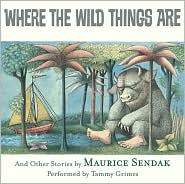
Recess Queen by Alexis O'Neill
 Early Literacy Aside--Explain: One thing you can pass on to your children is an enjoyment of books. Children who enter school enjoying books and reading are more likely to stick with learning to read even if it is difficult. For over half our children, learning to read in school is difficult. I know we have a lot of book-lovers here. In today's storytime, I'll point out some ways to keep your children's attention and keep the booksharing time enjoyable.Book Introduction: I show the cover of the book Recess Queen by Alexis O'Neill and flip through the pages to show my love of a few descriptive illustrations, especially facial expressions that show feelings like”mad and scared.
Early Literacy Aside--Example: Read with your child in a comfortable setting so you may share and talk about the book, including what the pictures are saying. When you take time to talk with your child and listen to what your chld says about the pictures, you are helping to make an enjoyable time with the book, which helps print motivation.
Early Literacy Aside--Explain: One thing you can pass on to your children is an enjoyment of books. Children who enter school enjoying books and reading are more likely to stick with learning to read even if it is difficult. For over half our children, learning to read in school is difficult. I know we have a lot of book-lovers here. In today's storytime, I'll point out some ways to keep your children's attention and keep the booksharing time enjoyable.Book Introduction: I show the cover of the book Recess Queen by Alexis O'Neill and flip through the pages to show my love of a few descriptive illustrations, especially facial expressions that show feelings like”mad and scared.
Early Literacy Aside--Example: Read with your child in a comfortable setting so you may share and talk about the book, including what the pictures are saying. When you take time to talk with your child and listen to what your chld says about the pictures, you are helping to make an enjoyable time with the book, which helps print motivation.
Submitted by Carolyn Lewis, Pamunkey (VA) Regional Library
Who Took the Farmer's Hat? by Joan Nodset
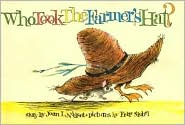
Submitted by Linda Gosnell, Pamunkey (VA) Regional Library
Little Red Hen
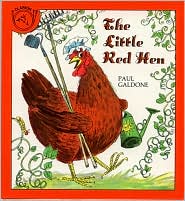
Submitted by Phyllis Arbogast, Blackwater (VA) Regional Library, Carrollton Branch
Mouse Craft
Craft: Give a piece of paper and crayon or marker to each child and adult. Each person can draw an oval for the body of the mouse. For the ears make an M or m. Let's practice making an M in the air with our hand and arm.Early Literacy Aside--Example: Don't worry about if your child does this exactly right or not. Enjoy making the mouse and help him squeak and talk. You can also talk about the shapes your child is drawing. Seeing and making shapes helps your children recognize letters as well.
Is Your Mama a Llama? by Deborah Guarino
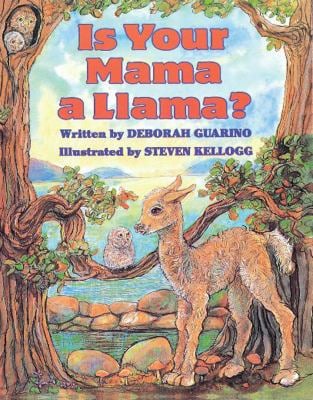 Early Literacy Aside--Explain:The ability to hear and play with the sounds of words, as in rhyming, is an important skill for reading. To recognize these rhymes and how words are related by sound is part of what educators term phonological awareness and will help your children later sound out words.During the storytime, read the book Is Your Mama a Llama? by Deborah Guarino
Each page describes the animal that might be llama's mother. Let's guess what will come on the next page. I will emphasize the word that will rhyme on the next page. For example, if I say now, guess what animal we will see. The author gives us other clues, like brown and moo. So, we know the animal will rhyme with now is COW!
Early Literacy Aside--Example: Some books, like this one, use rhymes in a playful way. Playing with rhyming words is one good way to help children hear the smaller sounds in words which will later help them sound out words when they learn to read.
Early Literacy Aside--Explain:The ability to hear and play with the sounds of words, as in rhyming, is an important skill for reading. To recognize these rhymes and how words are related by sound is part of what educators term phonological awareness and will help your children later sound out words.During the storytime, read the book Is Your Mama a Llama? by Deborah Guarino
Each page describes the animal that might be llama's mother. Let's guess what will come on the next page. I will emphasize the word that will rhyme on the next page. For example, if I say now, guess what animal we will see. The author gives us other clues, like brown and moo. So, we know the animal will rhyme with now is COW!
Early Literacy Aside--Example: Some books, like this one, use rhymes in a playful way. Playing with rhyming words is one good way to help children hear the smaller sounds in words which will later help them sound out words when they learn to read.
Maisy Big, Maisy Small by Lucy Cousins

Submitted by Ellen Abramson, Fairfax County (VA) Public Library System
This Is the Way We Wash Our Face
Song: This Is the Way We Wash Our Face (Sung to the tune of Here We Go 'Round the Mulberry Bush)
Let's sing this song and tell a little story about how we take a bath.
"This is the way we wash our face (actions to words to all these)
shampoo our hair scrub our skin dry with a towel, etc. Early Literacy Aside--Example: This song helps us learn different vocabulary words about bathtime, like shampoo and scrub. I hope you will talk about this when you take a bath tonight. What other words can you come up with? Talking about interesting, fun words like this will help your children recognize words later on when they read them.
Submitted by Stacey Harwood, Henrico County (VA) Public Library, Twin Hickory Branch
Let's Go Froggy by Jonathan London

Submitted by Charles Nagel, Chesterfield County (VA) Libraries
Little Bunny Foo Foo: Told and Sung by the Good Fairy by Paul Johnson
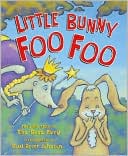
Submitted by Jackie Anas, Portsmouth (VA) Public Library
Making Gingerbread Fingerplay
 Fingerplay:Stir a bowl of gingerbread (pretend to stir)
Smooth and spicy brown
Roll it with a rolling pin (pretend to roll dough)
Up and up and down
With a cookie cutter (imitate)
Make some little men
Put them in the oven (imitate)
'Til half past ten! (pretend to look at watch)
Early Literacy Aside--Example: Rhyming is one way that children learn to hear the smaller parts of words, also called phonological awareness. Talking about the words that rhyme as you say rhymes with your children will better prepare them to read when they begin to sound out words in school. Adding motions makes it more fun!
Fingerplay:Stir a bowl of gingerbread (pretend to stir)
Smooth and spicy brown
Roll it with a rolling pin (pretend to roll dough)
Up and up and down
With a cookie cutter (imitate)
Make some little men
Put them in the oven (imitate)
'Til half past ten! (pretend to look at watch)
Early Literacy Aside--Example: Rhyming is one way that children learn to hear the smaller parts of words, also called phonological awareness. Talking about the words that rhyme as you say rhymes with your children will better prepare them to read when they begin to sound out words in school. Adding motions makes it more fun!
Submitted by Amy Cook, Henrico County (VA) Public Library--Tucahoe Area Library
Bear Went Over the Mountain--Rhyming Song
Song: The Bear Went Over the MountainThe bear went over the mountain, the bear went over the mountain The bear went over the mountain, to see what he could see. And what do you think he saw? And what do you think he saw? He saw a goat in a boat, he saw a goat in a boat. He saw a goat in a boat, That is what he saw.
Go through the song.
Early Litearcy Aside--Example: Rhyming is an important part of phonological awareness. It helps children break down words into smaller sounds and identify similar sounds in different words.This skill will help them when they sound out words to learn to read. Re-sing the song putting up different felt figures (skunk in a trunk) and allow the children to tell you what they see.
Early Literacy Aside--Empower: You can sing this song with any rhyming words. Work together with your child to create another verse. Don't be afraid to use nonsense words! Submitted by Erin Rogers, Henrico County (VA) Public Library--Gayton Branch
Hickory Dickory Dock or Any Nursery Rhyme
 Early Literacy Aside--Empower: Nursery rhymes are important to do with your children, not only here in storytime, but at home as well. The rhyming and repetition of words helps your child develop the awareness of different word sounds. This helps develop their phonological awareness which is important for later sounding out words. Also, nursery rhymes are fun to sing and act out!
Submitted by Michelle Edwards, Gloucester Library (VA)
Early Literacy Aside--Empower: Nursery rhymes are important to do with your children, not only here in storytime, but at home as well. The rhyming and repetition of words helps your child develop the awareness of different word sounds. This helps develop their phonological awareness which is important for later sounding out words. Also, nursery rhymes are fun to sing and act out!
Submitted by Michelle Edwards, Gloucester Library (VA)
